The day before her death in February 1895, the painter Berthe Morisot wrote to her only child: "My little Julie, I love you as I die; I will love you when I'm dead... you haven't made me sad once in your little life. You have beauty and wealth; use them well."
Morisot was the first woman impressionist, the only female represented at the movement's inaugural exhibition in 1874. Because she could not frequent cafés, Morisot held a weekly salon at her home in Passy, in Paris's 16th district. Julie grew up surrounded by great artists: her mother, her uncle Édouard Manet, Edgar Degas, Claude Monet and Pierre Auguste Renoir.
The Manets, Morisots and Rouarts, their friends and cousins, were a cultivated coterie who expressed themselves in paint or in writing. Until March 20th, 2022, Julie Manet: An Impressionist Heritage, at the Musée Marmottan Monet, recounts the saga of these three families, united by marriage, and of Julie's life, through more than a hundred works of art. The show includes dozens of portraits of Julie, who was first painted by her uncle Édouard at age 15 months. She would become a favourite model to her mother, to Renoir and her future husband, Ernest Rouart.
When Julie was an infant, Morisot described her as “like a little cat, always in a good mood”. At age nine, Julie is doll-like, with a round face and diaphanous complexion, in Renoir’s 1887 Child with Cat. Her almond eyes and sweet smile are mirrored in the expression of the kitten she holds. The embroidered gold pattern on her white dress resembles that of the cat’s fur.
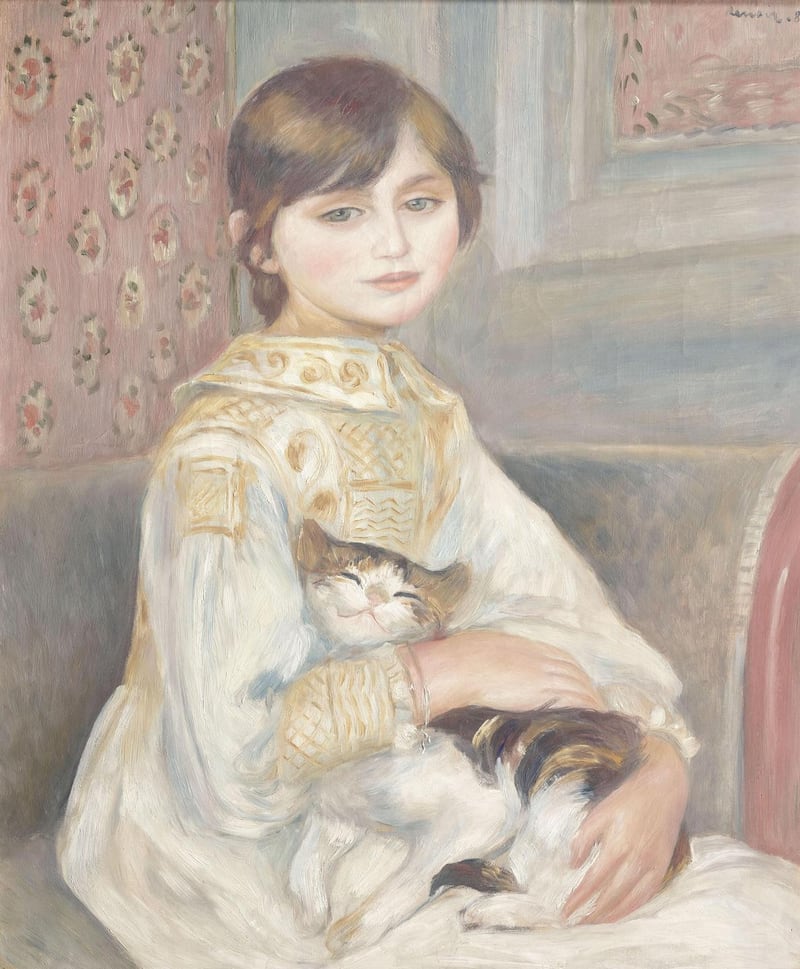
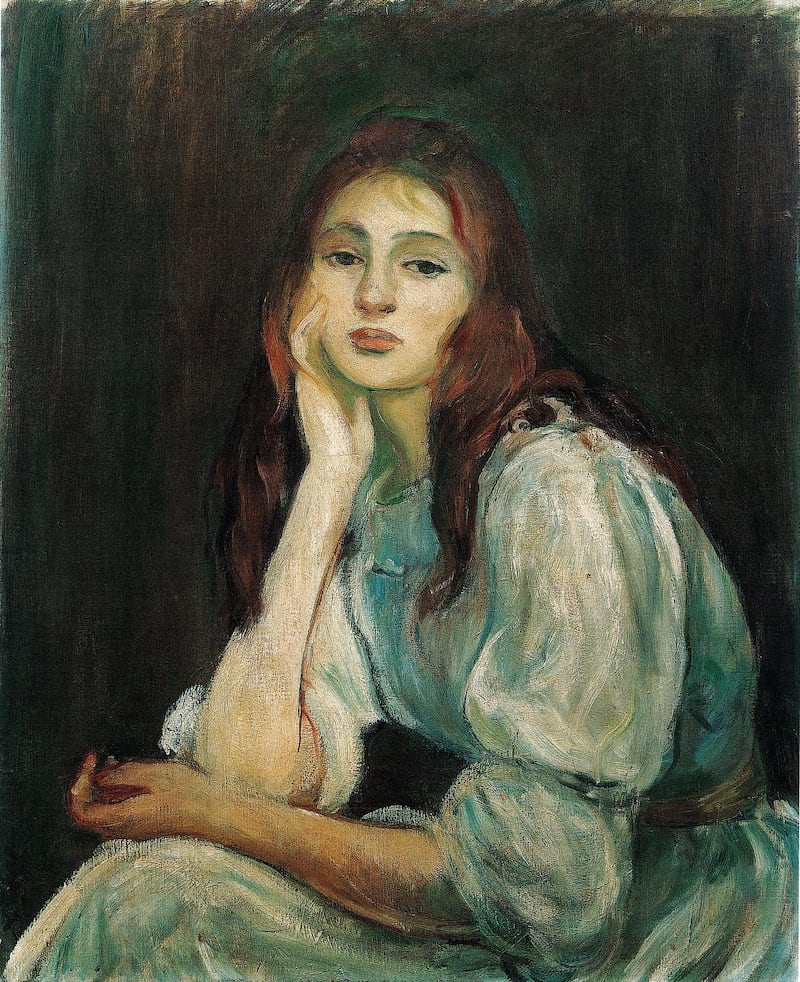
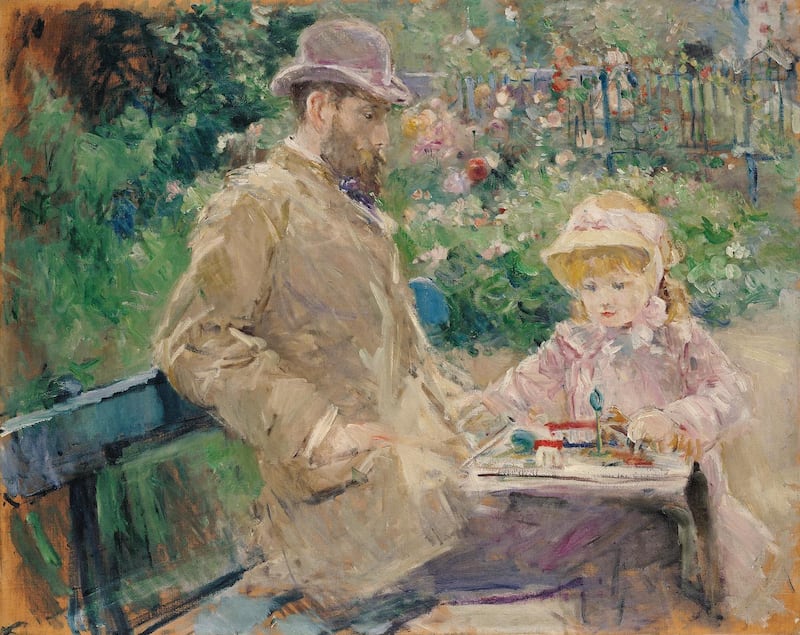
Morisot’s 1894 Julie Daydreaming is the most psychological portrait of her daughter, and the signature painting of the exhibition. At age 16, Julie has known the pain of losing her father, and has blossomed into a contemplative young woman who recorded her observations in a recently published diary.
Morisot's husband comes across as a subdued figure, outshone by the luminous Julie, in Eugène Manet and His Daughter in the Garden (1881). Berthe is believed to have loved Eugène's brother, Édouard, who painted her more than a dozen times. Édouard was already married to the Dutch piano teacher Suzanne Leenhoff. Berthe was 33 years old and may have accepted Eugène's proposal to escape spinsterhood, and to join the Manet family.
I asked Marianne Mathieu, the commissioner of the exhibition, if she thought Édouard and Berthe were lovers. "I think it's irrelevant," she replied. "One must respect their decision to eradicate this question."
Édouard painted his last portrait of his sister-in-law, Berthe Morisot with a Fan, in 1874, shortly before her marriage to Eugène. She wears black lace, like the models of Velázquez, whom Manet admired. Morisot no longer looks the painter in the eye, and flaunts the ring on her finger. Her vibrancy contrasts sharply with the plump, dull aura of Suzanne as painted by Manet.
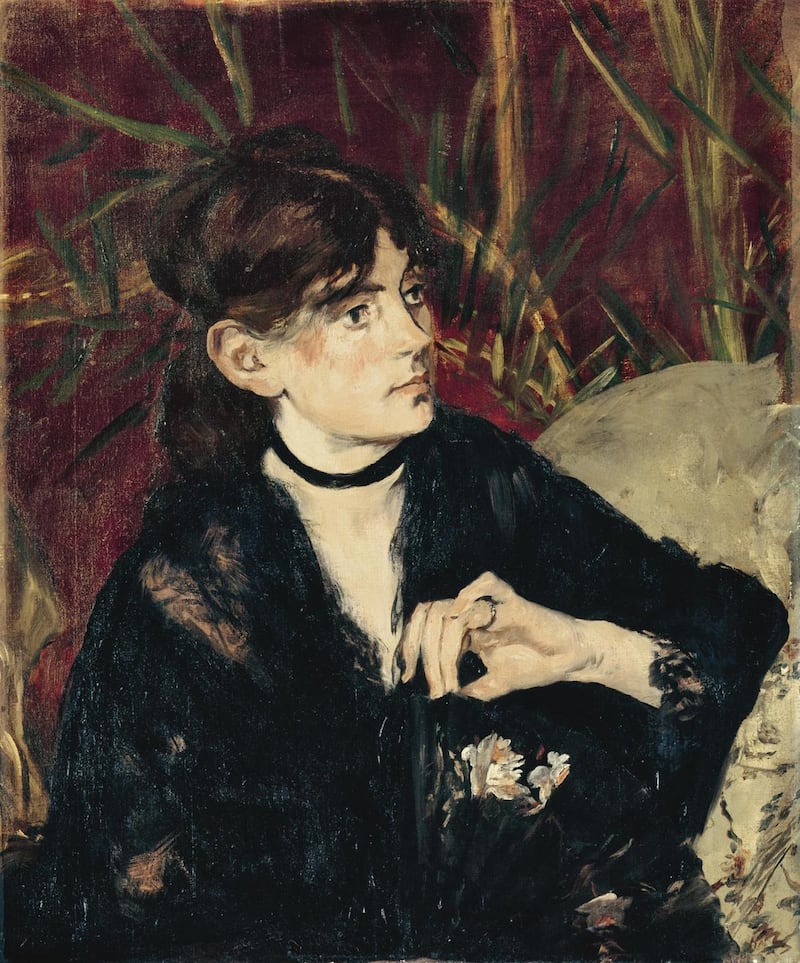
The exhibition includes the masterpieces that Julie inherited and hung throughout her parents' former apartment. Her father-in-law, the industrialist Henri Rouart, owned the world's largest art collection when he died in 1912. Ernest Rouart and Julie spent 40 per cent of their considerable fortune buying his treasures at auction, with the intention of donating them to the Louvre. After Ernest's death, Julie gave his favourite painting, Corot's bucolic Gardens of the Villa d'Este to the Louvre in his memory. Corot had taught Morisot, and Julie kept her mother's copy of the original.
Julie was an accomplished amateur painter but stopped showing her own work when she married. Her paintings of family members, and a host of letters, poems, diaries, and photographs, document the web of relationships that underpinned much of late 19th- and early-20th-century French art and literature.
Édouard Manet painted his friend Stéphane Mallarmé, the symbolist poet, leaning to the side of an armchair, pausing between puffs on his cigar. The pose is relaxed, but the poet’s mind is clearly racing. Through Manet, Mallarmé grew close to Morisot.
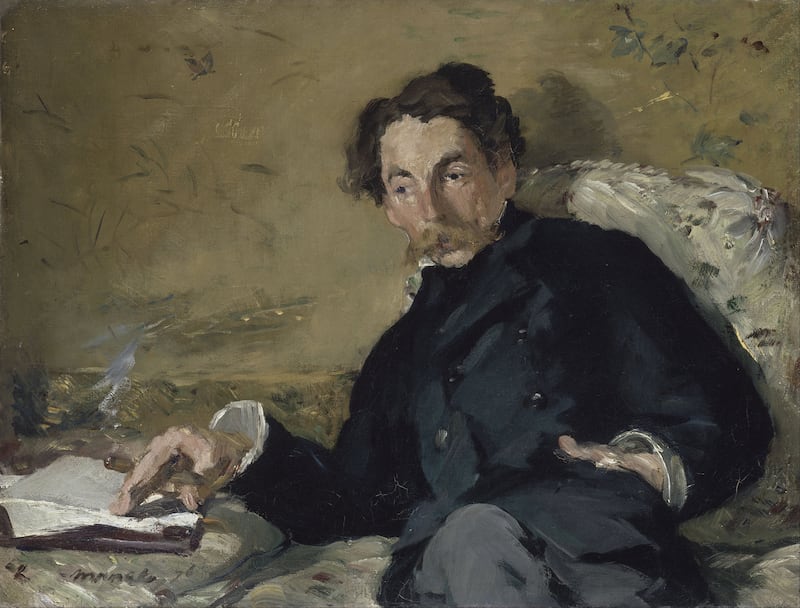
When Julie’s father died in 1892, Mallarmé, a teacher of English, gave the girl a pet greyhound called Laertes, after Hamlet’s loyal friend. Morisot painted her daughter in mourning black, her eyes ringed by grief, with Laertes standing watch beside her.
Mallarmé became Julie’s guardian when she was orphaned three years later. “He gave her a poem and a book every New Year’s Eve,” says Mathieu. “Julie was rich. Mallarmé was poor. But in a family where art is considered the most valuable possession, a sonnet scribbled on a calling card is priceless.”
Morisot had instructed Julie to continue living with her cousins, Jeannie and Paule Gobillard, the daughters of Morisot's elder sister, Yves, who were also orphans. Paule, the eldest by a decade, looked after Jeannie and Julie. They had been born in the same apartment less than two years apart, and were inseparable. Mallarmé christened the three young women "the flying squadron" because they travelled so much.
Mallarmé’s protégé, the poet Paul Valéry, would marry Jeannie. Degas was a close friend of Henri Rouart and organised the first meeting in the Louvre between Julie and his friend’s son, Ernest, his only pupil. Édouard Manet had met Morisot when they too copied paintings in the Louvre, 30 years earlier.
As recounted in Jeannie’s diary, Degas invited the young people to his studio in January 1900. He bluntly asked Julie if she would marry Rouart. Julie laughed nervously, then said, “Yes, without hesitation” – if it was Ernest and not “Monsieur Degas” who was asking.
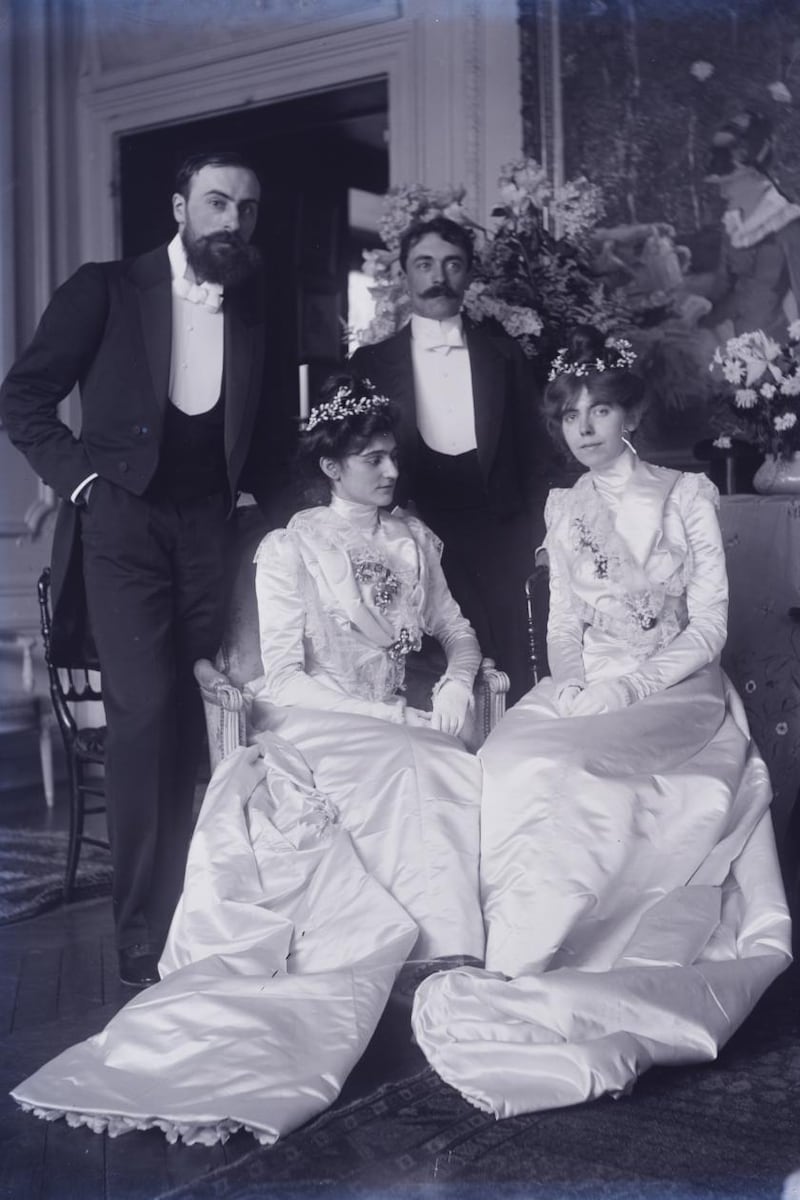
The three young women went to the Manet family tomb at the cemetery in Passy to seek Morisot’s posthumous blessing. “The soul of Aunt Berthe was waiting for us under the cypress tree, and I was crying and said to her, ‘Aunt Berthe, you entrusted her to me... I have brought her back to you so that you can give her again’.”
Jeannie and Julie married Valéry and Rouart in a double wedding ceremony five months later. The brides and grooms wore identical gowns and cutaway jackets. Julie and Ernest inhabited the fourth floor of the apartment building at number 40 rue de Villejust in Passy, the neighbourhood where both Morisot and Julie spent their entire lives. An aunt moved out of the third-floor apartment so that Jeannie and Paul could live there. Valéry became famous and the street was given his name.
As a married lady busy raising three sons, Julie no longer had time to pose for her husband, so he repeatedly painted her seated at her desk, catching up on correspondence. In Julie Manet Writing, the opening painting in the exhibition, the bouquet and brass lamp on the mantlepiece and Julie’s concentrated expression, her head resting on one hand, are suffused in Bonnard-like, misty light from the window at the back right of the canvas.
Seen from the outside, Julie’s life appears to have been as sun-flooded as an impressionist landscape. Her arranged marriage was happy. Like her father Eugène before her, she focused her energy on perpetuating the artistic legacy of Morisot.
Unlike her parents and their entourage, Julie was a fervent Catholic. In 1914 she wrote to the canon of Notre-Dame Cathedral: “Degas needs God, but he doesn’t know it.” She and her equally devout husband joined the lay persons’ Third Order of Saint Dominic. They took the religious names Brother Antonin and Sister Rose of Lima and were buried in the robes of Dominican friars.
Yet unspoken sorrows ran like an undercurrent through the discreet life of the Parisian grande bourgeoisie. “When I think that I never dared to speak of Papa to Maman after his death...” Julie wrote in her diary. No one talked about the mental illness of Jeannie and Paule’s father, Théodore. Julie may not have known that her grandfather, Auguste, and her uncle, Édouard, died of syphilis. Some sources say the disease also killed Eugène and Morisot.
While Ernest Rouart served with the French army during the first World War, Julie visited Monet at Giverny, not far from the country manor she inherited at Le Mesnil. She wrote to Ernest of watching Monet’s Water Lilies take form.
Some 40 years later, in 1957, Julie Manet, almost 80 and long widowed, went to a Paris gallery to purchase a final painting, one of those she had watched Monet painting. The circle was completed. From birth until her death at the age of 88, Julie was, as she defined herself, “the last Manet” and the embodiment of impressionism.













